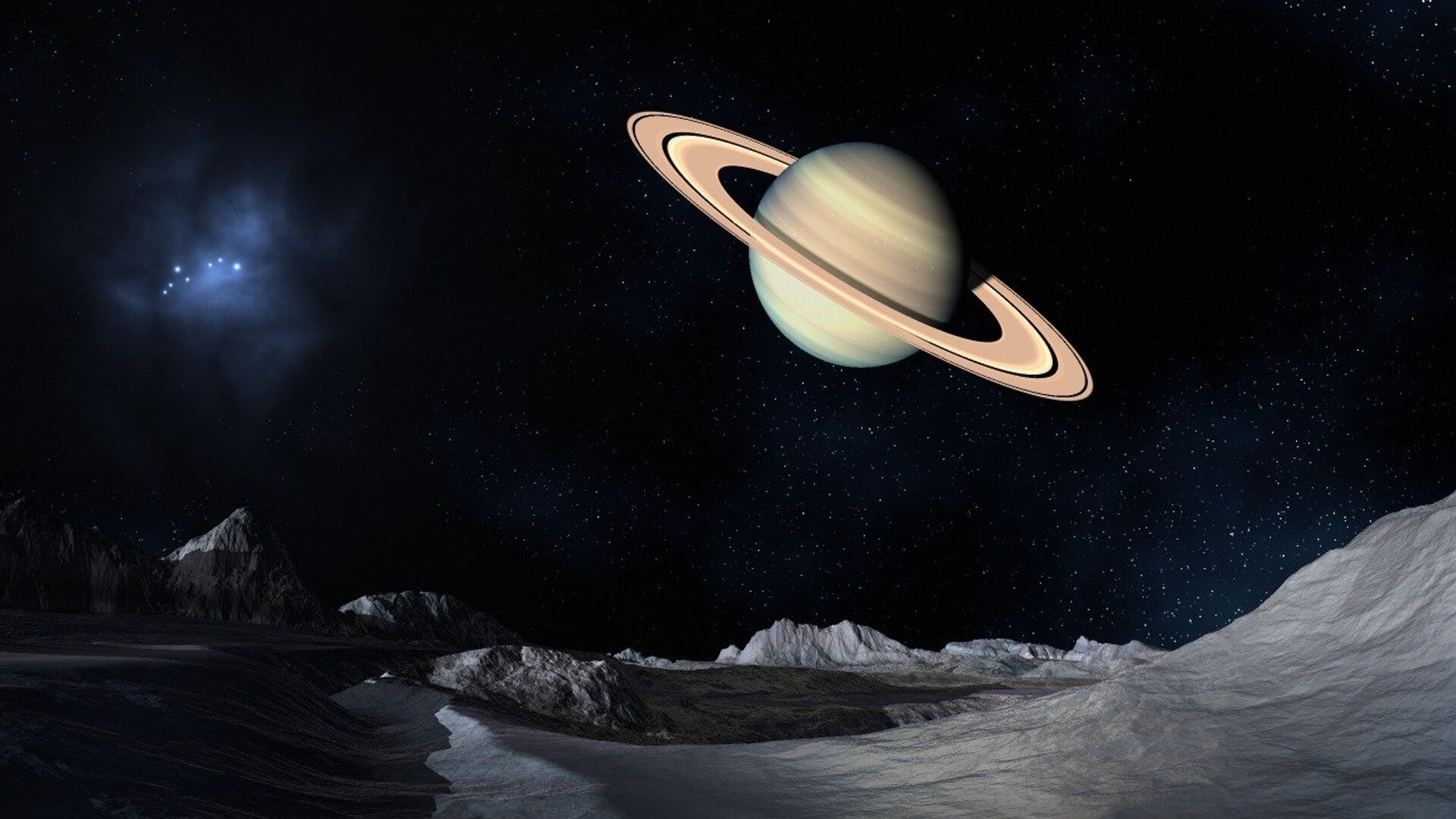https://sputnikglobe.com/20230513/take-that-jupiter-saturn-wins-back-status-as-planet-with-most-moons-1110305743.html
Take That Jupiter! Saturn Wins Back Status as Planet With Most Moons
Take That Jupiter! Saturn Wins Back Status as Planet With Most Moons
Sputnik International
After painstaking research, astronomers have discovered 62 additional moons orbiting Saturn, bringing the total to 145 moons.
2023-05-13T01:29+0000
2023-05-13T01:29+0000
2023-06-20T17:11+0000
beyond politics
science & tech
space
astronomy
saturn
jupiter
space exploration
https://cdn1.img.sputnikglobe.com/img/106146/61/1061466193_0:0:1280:720_1920x0_80_0_0_c7cf7862ceb9af0352c42c0d73026a2a.jpg
This month, Jupiter lost its crown as the planet in our solar system with the most moons after research from multiple astronomers revealed Saturn has 62 more moons than previously known, bringing its official total to 145 moons.After tracking 63 objects orbiting Saturn, a team of researchers confirmed its first satellite in 2021, while Saturn’s remaining 62 moons were confirmed this month.The exciting discovery was made by a team led by Edward Ashton, a postdoctoral fellow at the Academia Sinica Institute of Astronomy and Astrophysics, who was able to find Saturn’s smaller moons using a method in which a set of images are shifted at the same speed as the moon they are tracking moves -all in order to enhance that specific moon’s signal.While this image system, referred to as “shift and stack,” has been applied to Neptune and Uranus, this is the first time the technique has been used in researching Saturn. Additionally, while some of the moons have been spotted as early as 2019, those discoveries had to go unconfirmed until their orbit was tracked for several years.The latest developments suggest more moons for Jupiter may be found; however, the recent finding of Saturn’s moons is so dramatic, it essentially locks in Saturn’s status as the planet in our solar system with the highest number of moons.More data on Saturn's small outer moons are expected to be gathered once NASA’s Dragonfly mission is launched in 2027.
Sputnik International
feedback@sputniknews.com
+74956456601
MIA „Rossiya Segodnya“
2023
News
en_EN
Sputnik International
feedback@sputniknews.com
+74956456601
MIA „Rossiya Segodnya“
Sputnik International
feedback@sputniknews.com
+74956456601
MIA „Rossiya Segodnya“
astronomy, planets, space, discovery, science, research, saturn, jupiter, moons
astronomy, planets, space, discovery, science, research, saturn, jupiter, moons
Take That Jupiter! Saturn Wins Back Status as Planet With Most Moons
01:29 GMT 13.05.2023 (Updated: 17:11 GMT 20.06.2023) Saturn first lost its title after it was announced in February that Jupiter added 12 new moons to its tally (making up a total of 95 moons), while Saturn was only known to have 83.
This month, Jupiter lost its crown as the planet in our solar system with the most moons after research from multiple astronomers revealed Saturn has 62 more moons than previously known, bringing its official total to 145 moons.
After tracking 63 objects orbiting Saturn, a team of researchers confirmed its first satellite in 2021, while Saturn’s remaining 62 moons were confirmed this month.
“Saturn not only has nearly doubled its number of moons, it now has more moons than all the rest of the planets in the solar system combined,” said professor Brett Gladman, an astronomer at the University of British Columbia who was involved in the observations.
The exciting discovery was made by a team led by Edward Ashton, a postdoctoral fellow at the Academia Sinica Institute of Astronomy and Astrophysics, who was able to find Saturn’s smaller moons using a method in which a set of images are shifted at the same speed as the moon they are tracking moves -all in order to enhance that specific moon’s signal.
While this image system, referred to as “shift and stack,” has been applied to Neptune and Uranus, this is the first time the technique has been used in researching Saturn. Additionally, while some of the moons have been spotted as early as 2019, those discoveries had to go unconfirmed until their orbit was tracked for several years.
“At a fixed size there are three times more Saturn satellites than Jupiter satellites,” said Gladman. “They’re not all known yet, but we already know the final answer.”
The latest developments suggest more moons for Jupiter may be found; however, the recent finding of Saturn’s moons is so dramatic, it essentially locks in Saturn’s status as the planet in our solar system with the highest number of moons.
More data on Saturn's small outer moons are expected to be gathered once NASA’s Dragonfly mission is launched in 2027. 

